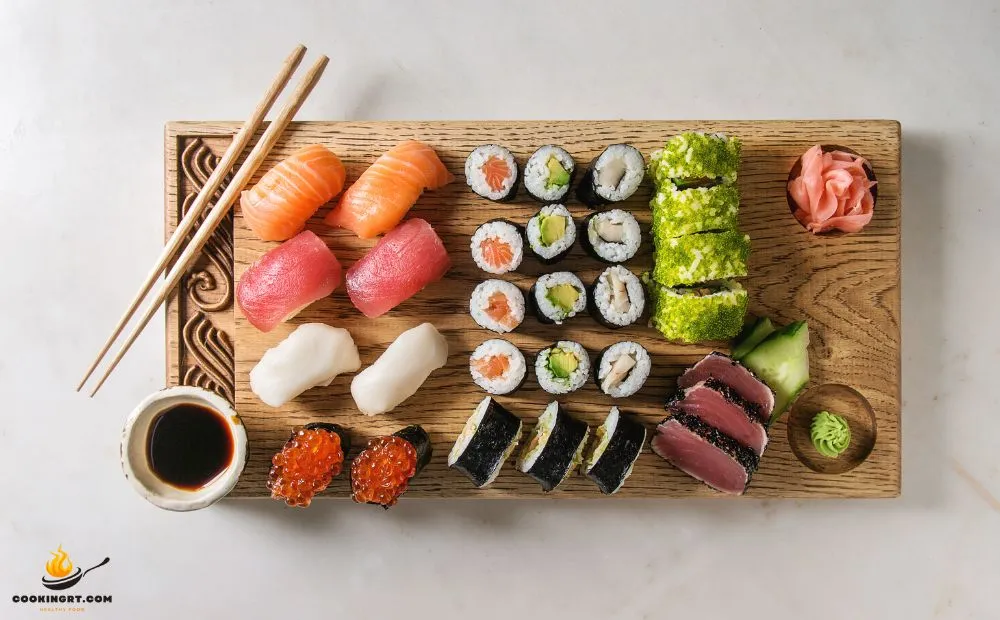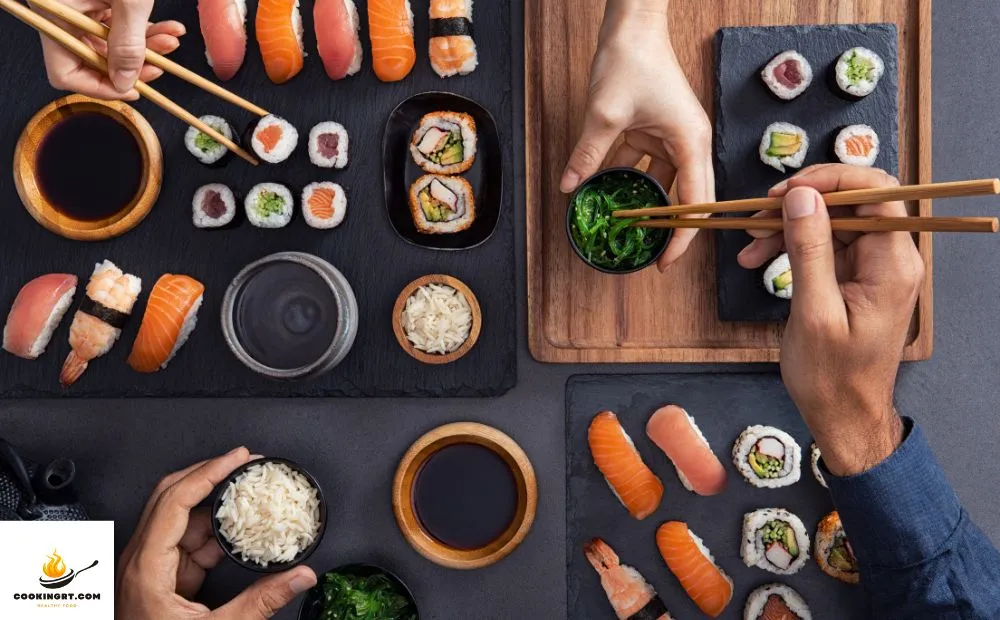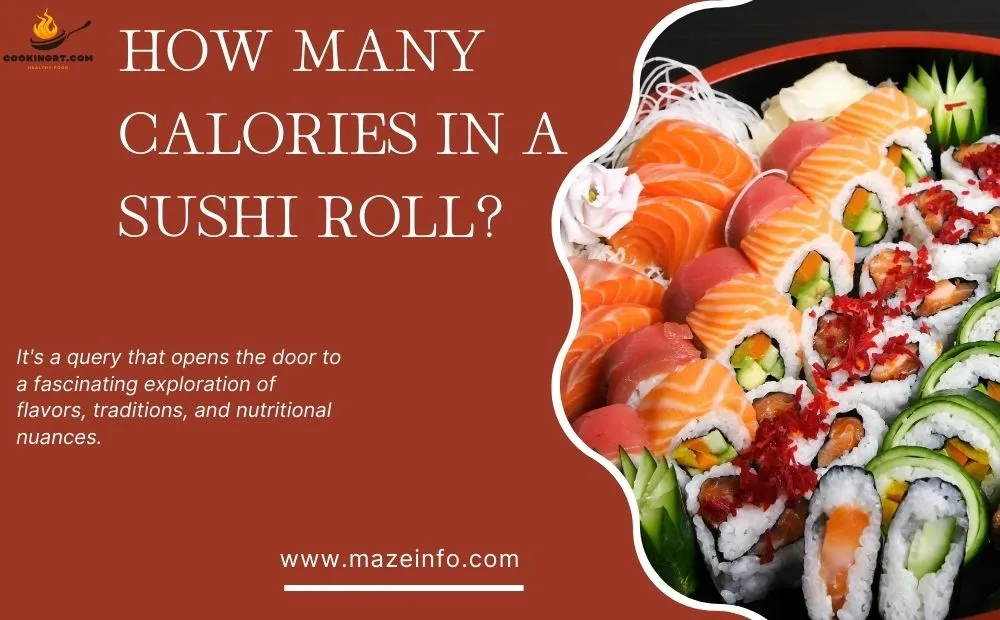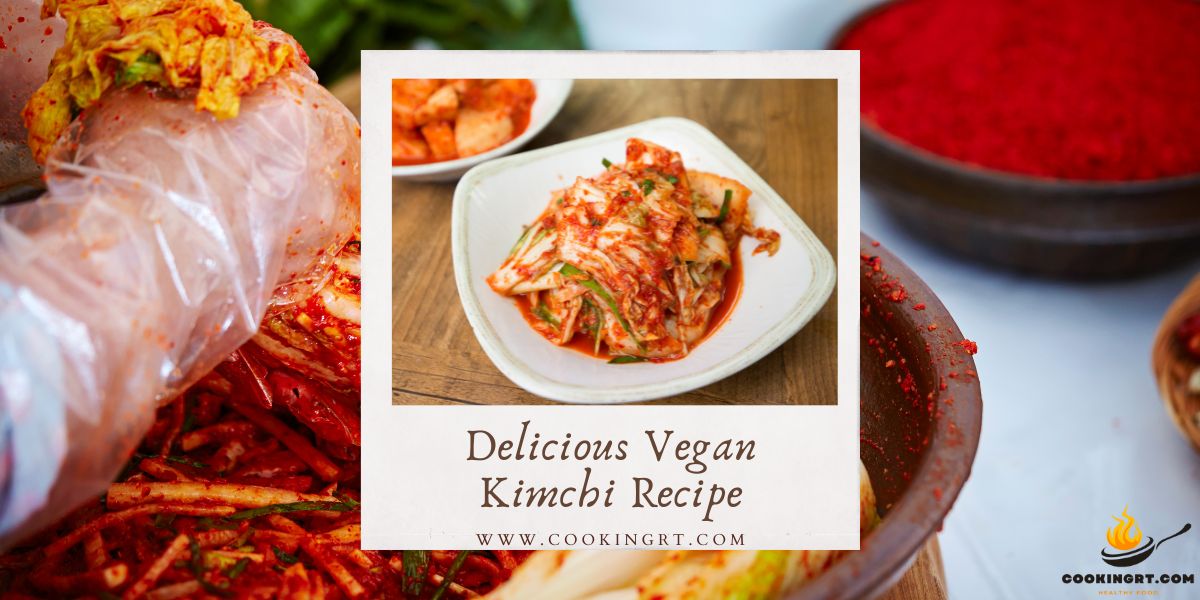In the world of culinary delights, the question often lingers like a tempting whisper: “How many calories in a sushi roll?” It’s a query that opens the door to a fascinating exploration of flavors, traditions, and nutritional nuances. Picture yourself in a tranquil Japanese eatery, contemplating the menu adorned with a variety of sushi rolls, each promising a unique culinary adventure. From classic California rolls to vibrant rainbow rolls, the intrigue of sushi extends beyond taste to the intricate balance of ingredients and calories, revealing a rich tapestry of culture and craftsmanship.
Calories in a Sushi Roll

Sushi rolls, a popular choice for many due to their blend of flavors and perceived health benefits, can vary significantly in calorie content depending on their ingredients and preparation methods. Here’s a comprehensive breakdown to help you understand and estimate the calories in a sushi roll.
The Basics: Rice, Seaweed, and Filling
Sushi Rice: Sushi rice is the primary calorie contributor in most maki sushi rolls. Prepared with vinegar, sugar, and salt, a single cup of cooked sushi rice contains approximately 240 calories. Considering that an average sushi roll contains about 1/2 to 3/4 cup of rice, this alone adds roughly 120 to 180 calories.
Nori (Seaweed): The seaweed wrapper, or nori, is low in calories, with a whole sheet containing about 5 to 10 calories. Its nutritional contribution comes more from its rich mineral content than its calorie count.
Fillings: The variety of fillings can greatly affect the calorie content:
Vegetables: Common vegetables like cucumber, avocado, and carrots add minimal calories. For instance, a quarter of an avocado adds about 60 calories.
Fish: Fresh fish like tuna and salmon are relatively low in calories, with a typical serving of 1 ounce (about 28 grams) of raw fish adding around 35 to 40 calories. However, when sushi includes fattier fish or is prepared as tempura (battered and fried), the calorie count can increase significantly.
Extras: Ingredients like cream cheese, spicy mayo, or tempura batter can add a considerable number of calories. A tablespoon of spicy mayo can add around 100 calories, while tempura batter can add another 100 to 150 calories depending on the portion size.
Popular Sushi Roll Examples
California Roll: Typically contains imitation crab, cucumber, and avocado, wrapped in rice and seaweed. A standard California roll can contain around 250 to 300 calories.
Spicy Tuna Roll: Includes spicy tuna mixture, often made with mayonnaise, increasing its calorie count to approximately 300 to 350 calories per roll.
Tempura Roll: Filled with tempura-fried ingredients, these rolls can easily exceed 500 calories due to the fried components.
Healthier Alternatives and Tips
Opt for Sashimi: If you’re watching your calorie intake, consider sashimi, which is simply slices of fresh fish without the rice, significantly lowering the calorie count.
Choose Brown Rice: Some sushi restaurant offer brown rice as a healthier alternative. It has slightly more calories but provides more fiber and nutrients.
Go Light on Sauces: Minimize the use of high-calorie sauces like spicy mayo or eel sauce. Opt for low-sodium soy sauce or skip the sauces altogether.
Vegetarian Options: Rolls with more vegetables and less rice can be lower in calories. Consider cucumber rolls, which are often under 200 calories.
Types of Sushi Rolls

Sushi, an iconic staple of Japanese cuisine, offers an impressive variety of flavors, textures, and presentations, particularly when it comes to sushi rolls. These rolls, or “makizushi,” are a beloved subcategory of sushi that encapsulate the art of combining vinegared rice, seaweed, and various fillings into a harmonious bite. Let’s explore the different types of sushi rolls and their unique characteristics.
Maki Roll (Makizushi)
Maki rolls are the classic and most recognizable form of tokyo sushi rolls. They are made by spreading a layer of vinegared rice over a sheet of seaweed (nori), placing various fillings such as fish, vegetables, or even fruit, and then rolling it tightly with a bamboo mat. Maki rolls are usually cut into six to eight bite-sized pieces. Popular variations include Tekka Maki (tuna roll), Kappa Maki (cucumber roll), and Futomaki, which is a larger, more elaborate version filled with multiple ingredients like tamago (sweet egg omelette), pickled vegetables, and sometimes even meat.
Inside-Out Roll (Uramaki)
Inside-out rolls, or uramaki, are a Western innovation where the rice is on the outside of the roll, while the nori wraps around the fillings. This style was created to appeal to Western palates that found the seaweed on the outside less appetizing. A quintessential example is the California Roll, which typically includes crab (or imitation crab), avocado, and cucumber, often garnished with sesame seeds or tobiko (fish roe) on the outside. Another popular variation is the Philadelphia Roll, which features smoked salmon, cream cheese, and cucumber.
Hand Roll (Temaki)
Temaki, or hand rolls, are a casual, cone-shaped variety of sushi fish. They are crafted by wrapping a sheet of nori around a generous portion of rice and fillings, forming a cone that can be easily held in hand. This style of sushi is less formal and is often enjoyed for its simplicity and convenience. Common fillings include tuna, salmon, and various vegetables. Because of their size and shape, temaki are typically eaten immediately after preparation to maintain the crispness of the nori.
Spicy Roll
Spicy rolls add an extra kick to the sushi experience, appealing to those who enjoy a bit of heat. These rolls often incorporate spicy mayonnaise or sriracha into the filling, usually mixed with tuna, salmon, or other types of fish. A popular example is the Spicy Tuna Roll, which combines raw tuna with a spicy sauce, cucumber, and sometimes scallions. The spicy element not only enhances the flavor but also provides a contrasting sensation to the cool, fresh ingredients typically found in sushi.
Vegetarian Roll (Yasai Roll)
Vegetarian rolls cater to those who prefer plant-based options, utilizing a variety of fresh vegetables, fruits, and sometimes tofu. The Avocado Roll is a simple yet beloved choice, highlighting the creamy texture of avocado. Other popular vegetarian options include the Cucumber Roll (Kappa Maki) and the Sweet Potato Roll, which features roasted or tempura-fried sweet potato for a delightful mix of flavors and textures. These rolls are not only healthy but also vibrant and refreshing.
Dragon Roll
The Dragon Roll is a visually stunning and flavorful type of sushi roll that often incorporates eel, avocado, and cucumber. The roll gets its name from its presentation, as the layers of avocado and eel are arranged to resemble dragon scales. The addition of unagi (eel) sauce, a sweet and savory glaze, enhances the overall taste, making it a favorite among sushi enthusiasts. The Green Dragon Roll specifically highlights avocado as the primary ingredient, while the Black Dragon Roll features unagi.
Rainbow Roll
Rainbow rolls are a feast for the eyes and palate, featuring a colorful array of sliced raw fish and avocado laid over a California roll. This vibrant presentation gives the appearance of a rainbow, hence the name. The variety of fish, such as tuna, salmon, and yellowtail, offers a delightful mix of flavors and textures. Rainbow rolls are perfect for those who want to experience multiple types of sashimi in one delightful bite.
Tempura Roll
Tempura rolls introduce a delightful crunch to sushi by incorporating tempura-fried ingredients. Shrimp tempura is a common filling, providing a satisfying contrast between the crispy exterior and the soft rice and nori. Tempura rolls can also include vegetables like asparagus or sweet potato, and are often drizzled with a savory sauce to enhance the overall flavor. This style is particularly popular among those who enjoy a mix of textures in their sushi.
Calorie Variations
The calorie content of sushi can vary widely depending on the ingredients and preparation methods used. Traditional sakana sushi rolls, such as nigiri and sashimi, are generally lower in calories compared to rolls that contain mayonnaise, tempura, or cream cheese. For example, a basic tuna or salmon nigiri typically contains around 40-60 calories per piece, while a roll like spicy tuna or California roll can range from 300 to 500 calories per roll due to added sauces and ingredients. Vegetarian rolls like cucumber or avocado rolls are usually lower in calories, averaging around 150-200 calories per roll. It’s important to be mindful of portion sizes and ingredients if you’re watching your calorie intake while enjoying sushi.
Also Read More: A Cheesy Ramen Recipe That Will Melt Your Taste Buds
Factors Affecting Calories

- Ingredients: The types of ingredients used in sushi can greatly impact its calorie content. For example, sushi made with fatty fish like salmon or tuna will generally have more calories than sushi made with leaner options like shrimp or crab. Additionally, adding ingredients like avocado, cream cheese, or tempura can increase the calorie count.
- Rice: The amount and type of rice used can also affect the calorie content. Sushi rice is typically seasoned with vinegar, sugar, and salt, which adds calories. Sushi rolls with more rice or made with brown rice (which has more fiber and nutrients but also slightly more calories than white rice) will have higher calorie counts.
- Portion Size: The size of the sushi pieces or rolls can influence calorie intake. Larger rolls or pieces will naturally have more calories than smaller ones.
- Preparation Methods: How the sushi is prepared can also impact its calorie content. For instance, sushi that’s deep-fried (like tempura rolls) will be higher in calories than sushi that’s raw or simply wrapped in seaweed.
- Sauces and Condiments: The use of sauces like soy sauce, eel sauce, spicy mayo, or mayonnaise-based dressings can significantly increase the calorie content of sushi.
- Fillings: The fillings used in sushi rolls can vary widely in terms of calorie content. For example, vegetable-based fillings will generally be lower in calories than fillings like cream cheese or fried ingredients.
- Customization: Customized sushi bar orders can also impact calorie intake. For example, opting for less rice, asking for no sauces, or choosing healthier fillings can lower the calorie content of your sushi.
Healthier Sushi Options
When it comes to enjoying sushi takeaway while maintaining a healthy diet, there are several options that can satisfy your cravings without compromising your health goals. Here are some healthier sushi choices to consider:
Sashimi
Sashimi is a fantastic option for those looking to cut down on carbs or who are watching their calorie intake. It consists of thinly sliced raw fish, such as salmon, tuna, or yellowtail, served without rice. This allows you to enjoy the freshness and flavors of the fish without the added carbohydrates from sushi rice.
Brown Rice Sushi
For those who still want the traditional sushi lover experience but with a healthier twist, brown rice sushi is an excellent alternative to white rice. Brown rice is higher in fiber and nutrients compared to white rice, making it a more nutritious choice. It also has a nuttier flavor that complements various sushi fillings well.
Vegetable Rolls
Vegetable rolls, such as cucumber rolls, avocado rolls, or mixed vegetable rolls, are perfect for vegans, vegetarians, or anyone looking to add more plant-based options to their fancy sushi meal. These rolls are typically low in calories and fat while providing essential vitamins, minerals, and antioxidants.
Seaweed Salad
While not technically sushi, seaweed salad is a common side dish at many sushi restaurants and can be a healthy addition to your meal. Seaweed is rich in vitamins, minerals, and fiber, making it a nutritious choice that can help promote digestive health and support your overall well-being.
Lightly Seared or Steamed Rolls
Instead of opting for deep-fried or tempura rolls, consider choosing rolls that are lightly seared or steamed. This reduces the amount of added oils and calories while still giving you a flavorful and satisfying sushi experience.
Calories in Popular Sushi Ingredients
When it comes to sushi, the calorie count can vary widely depending on the ingredients used. Here’s a breakdown of some popular sushi ingredients and their approximate calorie content:
Rice: Sushi rice is the foundation of most sushi rolls. A single cup of cooked sushi rice contains around 200 calories. Keep in mind that sushi rice is often seasoned with rice vinegar, sugar, and salt, which can add a few extra calories.
Nori (Seaweed): Nori is the thin, dark green seaweed used to wrap sushi rolls. A sheet of nori typically has about 10 calories. While low in calories, nori is rich in minerals like iodine and iron.
Fish (Salmon, Tuna, etc.): The calorie content of fish used in sushi can vary depending on the type and cut. For example, a 3-ounce serving of raw salmon contains roughly 175 calories, while the same serving size of raw tuna has around 110 calories. Fish like salmon and tuna are excellent sources of protein and healthy omega-3 fatty acids.
Vegetables (Cucumber, Avocado, Carrots): Vegetables used in sushi rolls can add nutritional value and flavor without significantly increasing calorie intake. For instance, half a cup of sliced cucumber has about 8 calories, while the same amount of avocado contains approximately 120 calories due to its higher fat content.
Sauces (Soy Sauce, Spicy Mayo): Sauces can elevate the taste of sushi but also contribute to its calorie count. A tablespoon of soy sauce has roughly 10 calories, while the calorie content of creamy sauces like spicy mayo can be higher, around 50 calories per tablespoon.
Extras (Tempura, Cream Cheese): Ingredients like tempura (battered and fried seafood or vegetables) and cream cheese can significantly increase the calorie content of sushi platter. A single piece of tempura shrimp adds about 100 calories, while an ounce of cream cheese contributes around 100-120 calories.
Calorie Counting Tips
Sure, here’s a simple table to help you estimate the calorie counts of common sushi items:
| Sushi Item | Calories (Approximate) |
|---|---|
| Nigiri (1 piece) | 50-70 calories |
| Sashimi (3 pieces) | 100-150 calories |
| California Roll | 250-300 calories |
| Spicy Tuna Roll | 300-400 calories |
| Salmon Avocado Roll | 300-400 calories |
| Vegetable Roll | 200-250 calories |
| Tempura Roll | 300-400 calories |
| Eel Roll | 300-400 calories |
| Cucumber Roll | 150-200 calories |
| Tuna Roll | 200-250 calories |
Balancing Sushi in a Healthy Diet

Sushi can indeed be part of a healthy diet when balanced appropriately. While sushi often contains nutrient-rich ingredients like fish, seaweed, and vegetables, it’s important to be mindful of certain factors to maintain a balanced diet. Opting for sushi varieties with lean fish like salmon, tuna, or mackerel provides omega-3 fatty acids, which are beneficial for heart health.
Choosing brown rice or sushi made with quinoa instead of white rice adds fiber and nutrients. Additionally, incorporating plenty of fresh vegetables like cucumber, avocado, and carrots boosts the fiber and vitamin content of your sushi meal. It’s also wise to limit high-calorie and high-sodium additions like tempura or creamy sauces and to enjoy sushi in moderation as part of a diverse and balanced diet.
Nutritional Benefits of Sushi
Balancing sushi in a healthy diet involves a few key considerations. While sushi can be a nutritious and delicious choice, especially with its focus on fish, seaweed, and rice, there are also factors to watch out for, like portion size and accompaniments. Here are some tips to help you enjoy whole foods sushi as part of a balanced diet:
Protein Powerhouse
Sushi house is renowned for its high protein content, making it an excellent choice for those looking to boost their protein intake. The primary source of protein in sushi is fish, particularly varieties like salmon, tuna, and mackerel. These fish are rich in essential amino acids, which are the building blocks of proteins necessary for muscle growth, repair, and overall body function. For individuals following a balanced diet or engaging in regular physical activity, sushi can be a valuable addition to ensure adequate protein consumption.
Healthy Fats
Another nutritional benefit of love sushi lies in its healthy fat content. Fish such as salmon and mackerel are abundant in omega-3 fatty acids, which are known for their heart-protective properties. Omega-3s help lower triglyceride levels, reduce inflammation, and support brain health. By incorporating sushi into your diet, you can increase your intake of these beneficial fats, promoting overall cardiovascular wellness and cognitive function.
Rich in Vitamins and Minerals
Sushi often includes a variety of vegetables and seaweed, adding a wealth of vitamins and minerals to the dish. For instance, seaweed is an excellent source of iodine, essential for thyroid function and metabolism regulation. Additionally, sushi commonly contains ingredients like avocado, cucumber, and carrots, providing vitamins A, C, and K, sushi catering as well as potassium and fiber. These nutrients play vital roles in immune function, vision health, bone strength, and digestive well-being.
Low in Calories
Compared to many other types of cuisine, sushi tends to be relatively low in calories, particularly when opting for rolls that are not fried or drenched in heavy sauces. The focus on fresh fish, vegetables, and rice means you can enjoy a satisfying meal without excessive caloric intake. This characteristic makes sushi a suitable choice for individuals seeking to manage their weight or adopt a calorie-conscious eating plan.
Antioxidant Boost
The inclusion of ingredients like ginger and wasabi in sushi menu provides an antioxidant boost. Ginger, known for its anti-inflammatory properties, can aid digestion and support immune function. Wasabi, derived from Japanese horseradish, contains compounds that have been studied for their potential anticancer effects and ability to combat bacterial growth. These additions enhance the overall nutritional profile of sushi, promoting holistic health benefits.
Conclusion
The number of calories in a sushi roll can vary significantly based on its ingredients and size. On average, a standard sushi roll containing fish, rice, vegetables, and seaweed typically ranges from 200 to 300 calories per roll. However, specialty rolls with added sauces, tempura, or larger portions of fish can have a higher calorie count, sometimes exceeding 500 calories per roll. It’s important to note that calorie counts can also vary between different sushi restaurants and chefs. Therefore, if you’re watching your calorie intake, it’s advisable to inquire about the specific ingredients and preparation methods used in the sushi roll you’re interested in.
Frequently Asked Questions (FAQ’s)
Q: How many calories are in a typical sushi roll?
Ans: The calorie content of a sushi roll can vary widely depending on its ingredients and size. On average, a standard sushi roll containing fish, rice, and seaweed typically ranges from 200 to 300 calories. Rolls with more ingredients like tempura or creamy sauces can have higher calorie counts.
Q: What factors affect the calorie count of a sushi roll?
Ans: The calorie content of a sushi roll is influenced by several factors, including the type and amount of fish or seafood, the quantity of rice, the presence of additional ingredients like avocado or cream cheese, and any sauces or dressings used.
Q: Are all sushi rolls low in calories?
Ans: Not necessarily. While sushi rolls can be a healthy choice, especially if they contain lean fish, vegetables, and minimal added fats, some rolls can be high in calories due to ingredients like fried tempura batter, mayonnaise-based sauces, or large amounts of rice.
Q: How can I make healthier choices when eating sushi rolls?
Ans: To make healthier sushi choices, opt for rolls with lean proteins like tuna, salmon, or yellowtail. Choose rolls with plenty of vegetables like cucumber, avocado, or seaweed salad. Avoid rolls with fried ingredients, excessive amounts of rice, or heavy sauces.
Q: Do different types of sushi rolls have significantly different calorie counts?
Ans: Yes, the calorie content can vary widely depending on the type of roll. For example, a simple cucumber roll or sashimi (fish slices without rice) will typically have fewer calories than a roll with fried ingredients, cream cheese, or spicy mayo.




